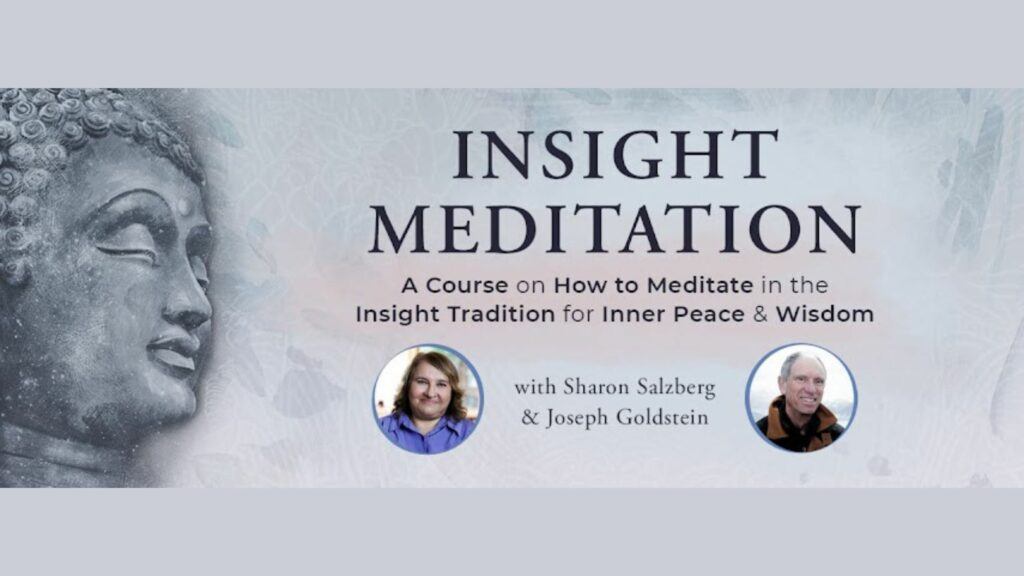Mindfulness is widely known today, but how many realize its deep roots in Buddhism? What is mindfulness in Buddhism, and how does it differ from the secular practices we see everywhere? In Buddhism, mindfulness is much more than a tool for relaxation or mental clarity – it’s a path toward profound self-understanding and freedom from suffering.
In this post we shall look into the Buddhist origins of mindfulness, exploring its purpose, foundational practices, and ethical dimensions. By the end, you’ll understand not only how mindfulness fits into Buddhist teachings but also how it can inspire a more aware, compassionate approach to life.
The Origins of Mindfulness in Buddhism
Mindfulness in Early Buddhist Texts
- The roots of mindfulness stretch back over 2,500 years to the teachings of the Buddha.
- In the earliest Buddhist texts, written in Pali and Sanskrit, mindfulness is referred to as sati in Pali and smṛti in Sanskrit. This term means “to remember” or “to keep in mind,” emphasizing the practice of maintaining awareness and attentiveness to the present moment.
- The Buddha taught mindfulness as a central practice, not just for monks or scholars, but as a practical tool for anyone seeking freedom from suffering.
- One of the core teachings on mindfulness is found in the Satipatthana Sutta, or “Discourse on the Foundations of Mindfulness.”
- Here, the Buddha describes mindfulness as an essential part of the journey toward awakening. He outlines four main areas where one can practice mindfulness: the body, feelings, mind, and mental objects.
- This text has guided generations of practitioners, showing that mindfulness, from a Buddhist perspective, is a skill to be developed and a means to gain direct insight into one’s experience.
Buddha’s Path to Enlightenment
- Mindfulness wasn’t merely one of the Buddha’s teachings; it was fundamental to his own journey to enlightenment.
- According to the traditional accounts of the Buddha’s life, he spent years searching for the path to liberation, practicing extreme forms of asceticism before realizing that balance, not deprivation, was the way forward.
- He began to meditate mindfully under the Bodhi tree, observing his thoughts, feelings, and sensations without clinging or aversion. Through this careful, present-centered awareness, he attained profound insight into the nature of suffering, impermanence, and the concept of anatta (non-self).
The Four Foundations of Mindfulness (Satipatthana)
The Satipatthana Sutta
- In this foundational text, the Buddha outlines a structured approach to mindfulness practice, detailing four domains – or “foundations” – that guide practitioners to cultivate awareness and insight into their inner and outer worlds.
- According to the Buddha, practicing mindfulness in these four areas is a direct path to enlightenment and liberation from suffering.
- This Sutta offers practitioners a way to observe and understand their experiences deeply, reducing attachment and cultivating wisdom.
The Four Domains of Mindfulness
Mindfulness of the Body
- Observing bodily sensations, breath, and movements: The first foundation is kāyānupassanā, mindfulness of the body. This involves tuning in to the body with close attention and awareness. Practitioners observe their breathing, bodily movements, and sensations – becoming deeply aware of the physical presence and the body’s ever-changing nature.
- Purpose: This practice is grounding, helping practitioners stay present and detached from mental distractions. By focusing on the body, one learns to see it as a process rather than as a fixed entity, which reduces attachment to physical forms.
- Practical Example: Taking a few minutes daily to practice mindful breathing or doing a simple body scan – observing each part of the body for sensations without judgment—can help ground and center the mind.
Mindfulness of Feelings
- Recognizing pleasant, unpleasant, and neutral feelings: The second foundation is vedanānupassanā, mindfulness of feelings. Here, feelings are not emotions but rather basic sensations that arise in response to experiences. Mindfulness of feelings involves noting whether sensations are pleasant, unpleasant, or neutral, without trying to hold onto or push them away.
- Purpose: This practice helps individuals recognize that feelings come and go, reducing the tendency to react automatically. By observing feelings, practitioners begin to see them as temporary and impersonal, reducing emotional reactivity.
- Practical Example: During the day, take moments to pause and check in with how you’re feeling, particularly in stressful situations. Notice if the feeling is pleasant, unpleasant, or neutral, without analyzing or judging it.
Mindfulness of the Mind
- Becoming aware of one’s mental states and patterns: The third foundation is cittānupassanā, mindfulness of the mind. This practice involves observing the state of the mind itself—whether it’s clear or cloudy, focused or distracted, compassionate or irritated. It’s about recognizing mental patterns without becoming entangled in them.
- Purpose: By observing the mind’s shifting states, one learns to understand their mind’s tendencies without identification or judgment. This practice fosters greater emotional balance and mental clarity.
- Practical Example: Throughout the day, notice moments when your mind feels restless or calm, happy or frustrated. Simply observe these states without attaching a story to them—just acknowledge the state and let it pass.
Mindfulness of Dhammas (Mental Objects)
- Observing phenomena like the five hindrances and seven factors of enlightenment: The fourth foundation is dhammānupassanā, mindfulness of dhammas (or mental objects). This domain invites practitioners to observe specific mental phenomena, such as the five hindrances (desire, ill will, sloth, restlessness, and doubt) and the seven factors of enlightenment (mindfulness, investigation, energy, joy, tranquility, concentration, and equanimity).
- Purpose: This practice provides a framework to understand the mental forces that affect the mind’s clarity and development. By observing these mental phenomena, practitioners can learn to cultivate qualities that support mindfulness and diminish those that hinder it.
- Practical Example: Notice when mental obstacles like desire or irritation arise. Instead of reacting, identify the hindrance or mental state and practice letting it go. Likewise, when you feel joy or concentration, acknowledge and appreciate these positive states.
Hey there! If you’re finding this post helpful, explore related articles that dive deeper into Buddhism and mindfulness. Expand your knowledge and enrich your practice – Check them out now!



The Purpose of Mindfulness in Buddhist Practice
Insight and Liberation
- Mindfulness in Buddhism extends far beyond simple stress relief or relaxation. Its true purpose is to guide practitioners toward insight (vipassana) and ultimate liberation from suffering (dukkha).
- The Buddha taught mindfulness as a transformative tool that enables individuals to observe their thoughts, emotions, and experiences without attachment or aversion. By practicing mindful observation, individuals can see reality as it truly is – not as they wish it to be.
- Through continuous practice, mindfulness uncovers deeper truths about existence, helping practitioners recognize habitual mental patterns and uncover the root causes of their suffering.
- This understanding is a step toward enlightenment, where one gains freedom from the cycles of desire and aversion that lead to perpetual dissatisfaction.
Understanding Impermanence, Suffering, and Non-Self
A central teaching of Buddhism involves the Three Marks of Existence: impermanence (anicca), suffering (dukkha), and non-self (anatta). Mindfulness practice is the gateway to directly experiencing and understanding these concepts.
- Impermanence (Anicca): Mindfulness allows practitioners to observe how all experiences, sensations, and mental states are fleeting. By paying close attention to thoughts and sensations, one becomes aware that they constantly change and pass. This awareness reduces attachment to fleeting pleasures and fears associated with pain or discomfort.
- Suffering (Dukkha): By mindfully observing experiences without judgment, practitioners can see that clinging to impermanent things and resisting change are primary sources of suffering. Mindfulness helps highlight these patterns, showing that chasing after pleasures or avoiding discomfort only leads to more dissatisfaction.
- Non-Self (Anatta): Mindfulness reveals that the concept of a fixed, unchanging self is an illusion. Observing the mind and body without identification teaches that thoughts, feelings, and sensations arise and pass independently of any solid identity. This realization helps weaken the attachment to the ego, fostering a sense of peace and acceptance.
Cultivating Wisdom and Compassion
The path of mindfulness is not just about personal insight; it naturally extends to the cultivation of wisdom and compassion. As mindfulness deepens one’s awareness of impermanence and the shared nature of suffering, it fosters empathy and kindness toward oneself and others. This compassionate understanding arises because practitioners see that just as they struggle with impermanence, desires, and suffering, so do all beings.
- Wisdom (Prajna): Mindfulness nurtures wisdom by enabling practitioners to see beyond surface-level reality. As one becomes skilled in observing the transient nature of experiences, the mind begins to develop prajna, or deep wisdom, which is essential for overcoming ignorance—the primary cause of suffering.
- Compassion (Karuna): A heightened awareness of one’s own challenges with suffering leads to greater empathy for others. This empathy grows into compassion, the wish for all beings to be free from suffering. Buddhist mindfulness supports not only seeing one’s own pain but responding to it with kindness and extending that kindness outward.
The combination of wisdom and compassion leads to a balanced state of mind where one acts not just for personal liberation but also contributes positively to the world around them.
Misunderstandings About Buddhist Mindfulness
Myth: Mindfulness Is Only for Monks
- One common misunderstanding about Buddhist mindfulness is that it is a practice reserved solely for monks or those living a monastic life.
- The Satipatthana Sutta, along with other Buddhist scriptures, was shared not only with monks but also with laypeople, merchants, farmers, and royalty.
- The Buddha believed that all individuals, whether they are deeply immersed in worldly responsibilities or live a secluded spiritual life, can benefit from cultivating mindfulness.
- The purpose of mindfulness in Buddhism is to help people develop awareness and insight into their daily experiences, leading to reduced suffering and greater contentment.
- Today, mindfulness practices adapted from Buddhist teachings are available to everyone and not an exclusive practice for those who dedicate their lives to monasticism.
Myth: Mindfulness Is Escaping Reality
- Another common misconception is that mindfulness practice is a way to escape reality, to withdraw from life’s challenges, or to avoid confronting difficult emotions.
- In fact, Buddhist mindfulness is quite the opposite – it is about turning toward reality with a clear and open mind.
- Mindfulness teaches practitioners to face experiences directly, whether they are pleasant, neutral, or difficult.
- This means recognizing emotions, thoughts, and sensations as they arise and accepting them without clinging or aversion.
- Far from being an avoidance strategy, mindfulness requires courage and honesty. By observing life as it unfolds, practitioners learn to confront suffering, fears, and uncertainties with a balanced and non-reactive attitude.
- This facing of reality allows individuals to respond to situations with clarity and compassion, rather than being swept away by automatic reactions or wishful thinking.
Myth: Mindfulness Means Emptying the Mind
- A widespread myth is that mindfulness involves emptying the mind or trying to create a blank mental state.
- This misunderstanding can lead people to believe that they are practicing mindfulness incorrectly if their thoughts persist during meditation.
- In truth, Buddhist mindfulness is not about suppressing thoughts or achieving a thought-free state. Rather, it is about observing whatever arises in the mind with non-judgmental awareness.
- Mindfulness encourages individuals to notice thoughts, feelings, and physical sensations without trying to change or suppress them.
- This practice helps people see that they are not their thoughts; instead, they have the ability to observe thoughts without becoming entangled in them.
For example, during mindfulness meditation, if a thought about work or an errand pops up, instead of struggling to push it away, one simply acknowledges it (“thinking” or “planning”) and gently returns attention to the breath or body. This approach nurtures an accepting, peaceful awareness that embraces the mind’s natural activity while fostering insight into its patterns.
Final Thoughts
Mindfulness, as practiced in Buddhism, is much more than a tool for stress relief; it is a profound practice rooted in ancient wisdom with the ultimate goal of insight and liberation.
Through understanding its origins, the Four Foundations of Mindfulness, and the purpose it serves, practitioners can embark on a journey that unveils the true nature of impermanence, suffering, and non-self.
By dispelling common myths and misconceptions, individuals can approach mindfulness with clarity and intention, recognizing that it is a practice for everyone – inviting each of us to face reality with open-hearted awareness and cultivate wisdom and compassion.
As mindfulness becomes integrated into daily life, it offers a path to deeper understanding and lasting peace.
Ready to take your mindfulness journey to the next level?
Discover programs that can enhance your practice and boost your overall well-being.





